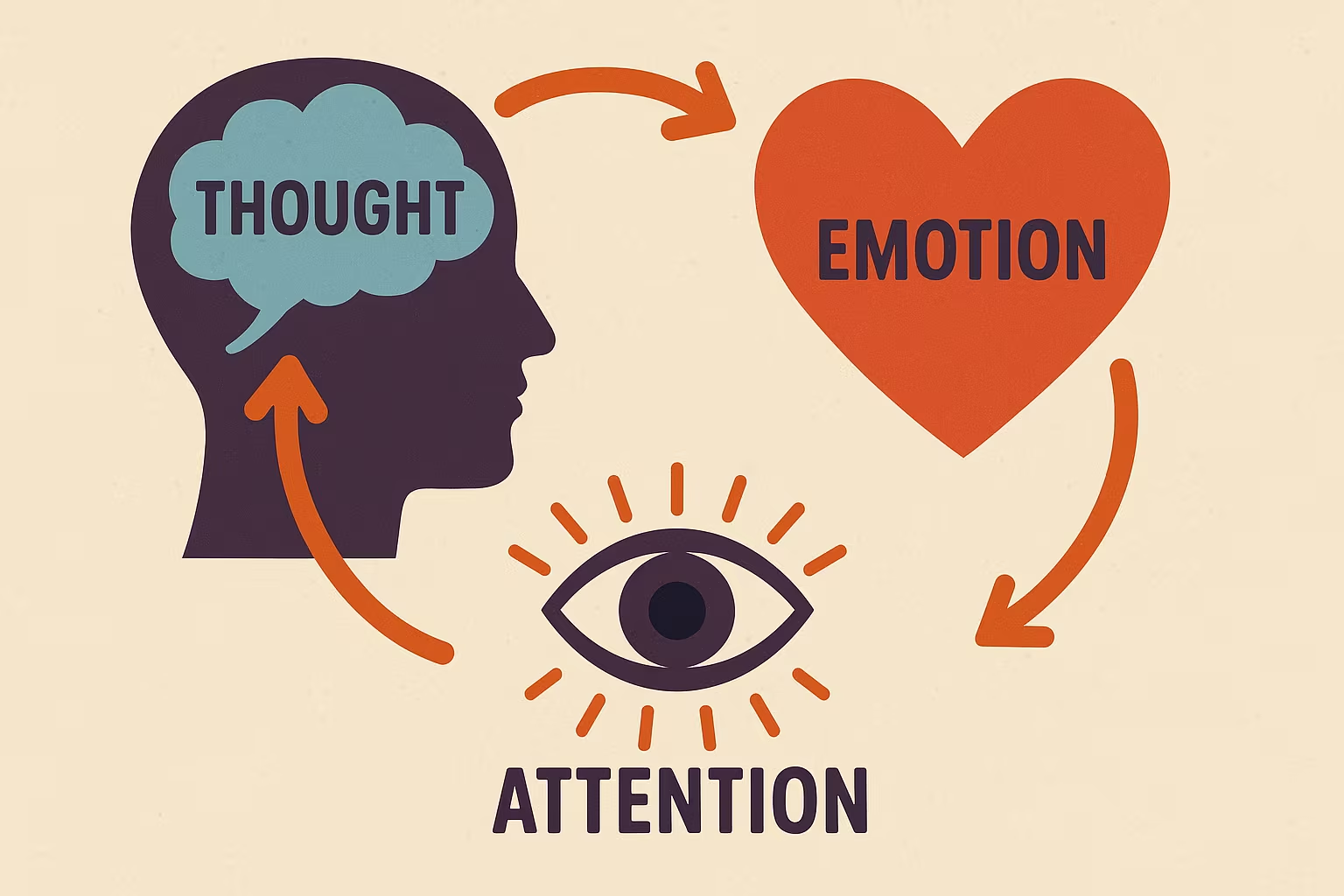Muscle cramps work via a feedback loop.
There is some trigger that causes the muscle to contract initially. This activates the nerves. When the nerves are activated, it signals more contraction. This feedback loop is continuous, meaning it is feeding into itself continually, despite that you may experience it as one singular “thing” - a cramp.
A similar thing happens at the level of the mind in relation to our emotions.
Imagine there is some kind of trigger that generates a thought. Take for example the thought about being late for something important. That thought then activates a certain emotion - anxiety. That emotion gives you the impression the initial thought is very important. Because of this impression, you end up giving your energy and attention to such a thought, expanding on it and making it more real to you. The details become more vivid, and the emotion then becomes even stronger. So it creates a feedback loop, just like a muscle cramp.

Muscle cramps are painful. So are thought cramps.
When we become afraid, anxious, or sad, it rarely occurs to us to say, “I must be having a thought cramp,” despite the fact that we are willing and encouraged to stretch a muscle out to stop the feedback loop.
Instead, we tend to defend our negative emotions. Why are we so willing to intervene in a feedback loop in our muscle to quell the pain but not in our minds? Why don’t we apply that to the mind as well? You would not expect someone to tell you to try to embrace the feeling of a leg cramp, would you? Yet we apply that exact same logic to our painful emotions. Why?
I believe this is partly due to the fact that in our culture it’s considered normal to experience these negative emotions and their source is often shrouded in mystery. Because of this, we are encouraged to sit in our negative emotions and try to make peace with them. I don’t believe this is possible. Peace is an emotion in itself, and you can’t make peace with a negative emotion. Peace happens when the thought cramp subsides.
The experience of painful emotions is taken for granted as being normal, expected, and part of life. We develop all sorts of coping mechanisms of dealing with negative emotions, meanwhile suffering greatly without necessity.
Yet a person can quite easily become aware of thought cramps, and experience a moment of clarity and decide to “stretch out” their mind and cease the feedback loop in an instant. This is done by recognising the part they play in the feedback loop as the one who gives attention to certain thought patterns, and stepping back from that role. This brings about a sense of peace. Because without negative thoughts spinning in the mind, the negative emotional charge associated with the thought dissipates, and the only thing that’s left is peace.
In the end, at least in this culture, the simple fact that our negative emotions are only being perpetuated via a feedback loop with thought evades our collective awareness. But this phenomenon is the key to the understanding that allows us to live a happy and peaceful life.
Peace of mind can be so easily attained by this simple recognition.




